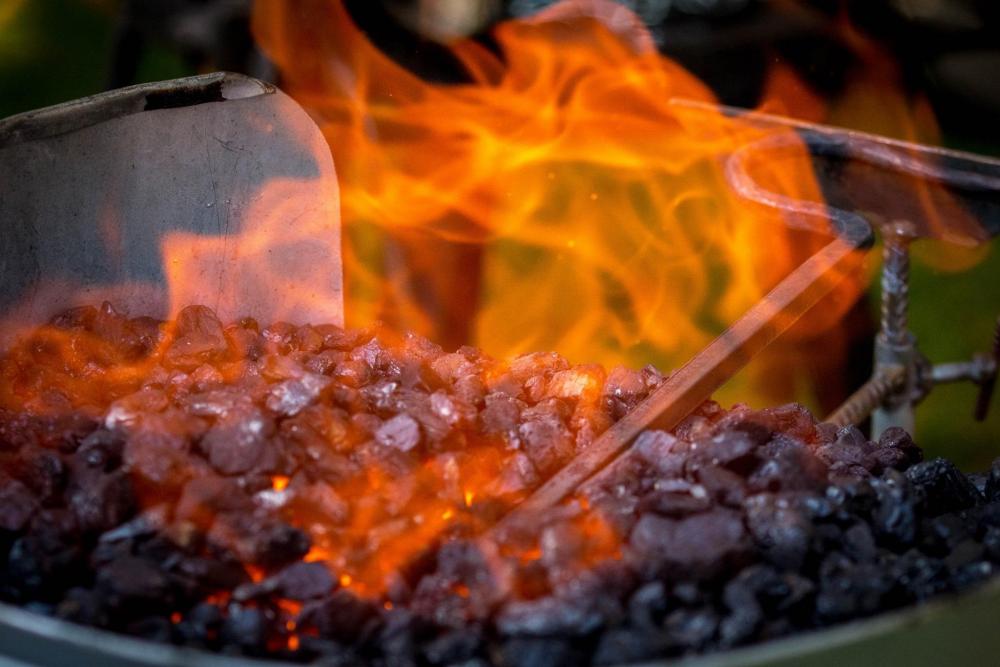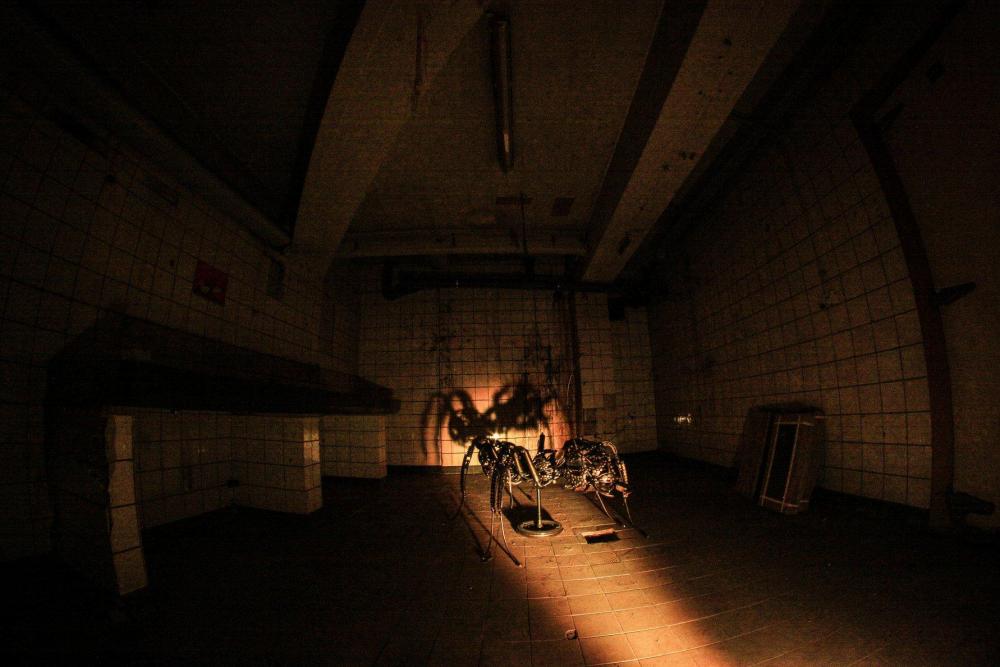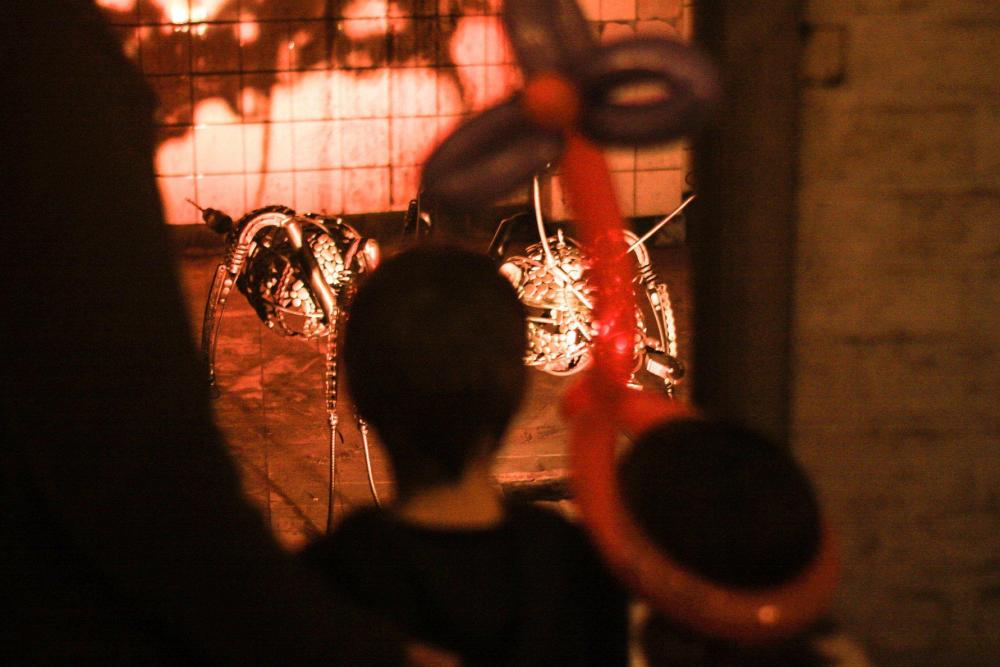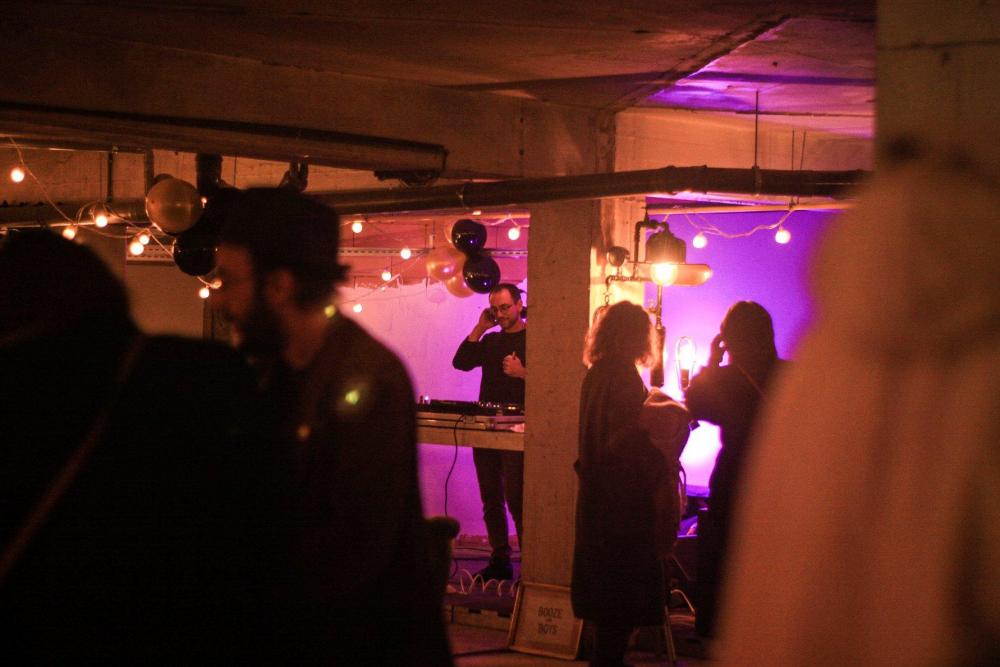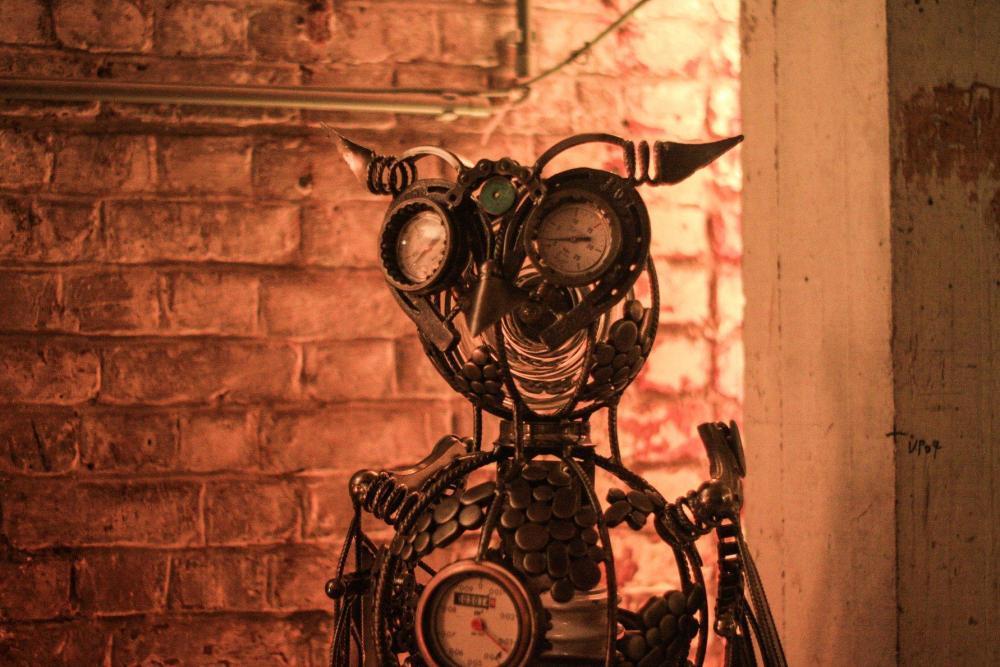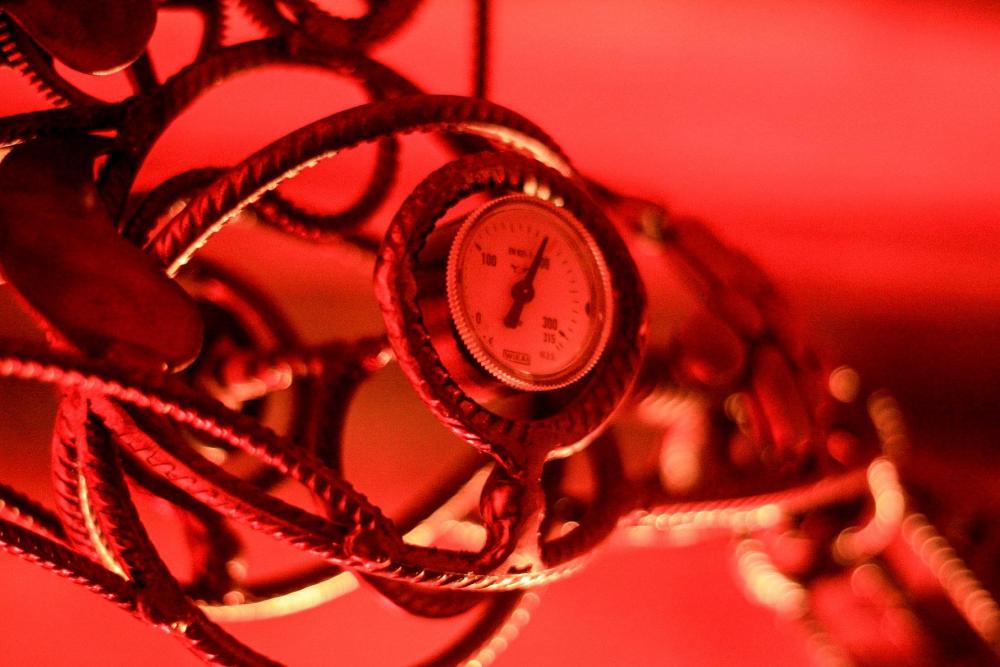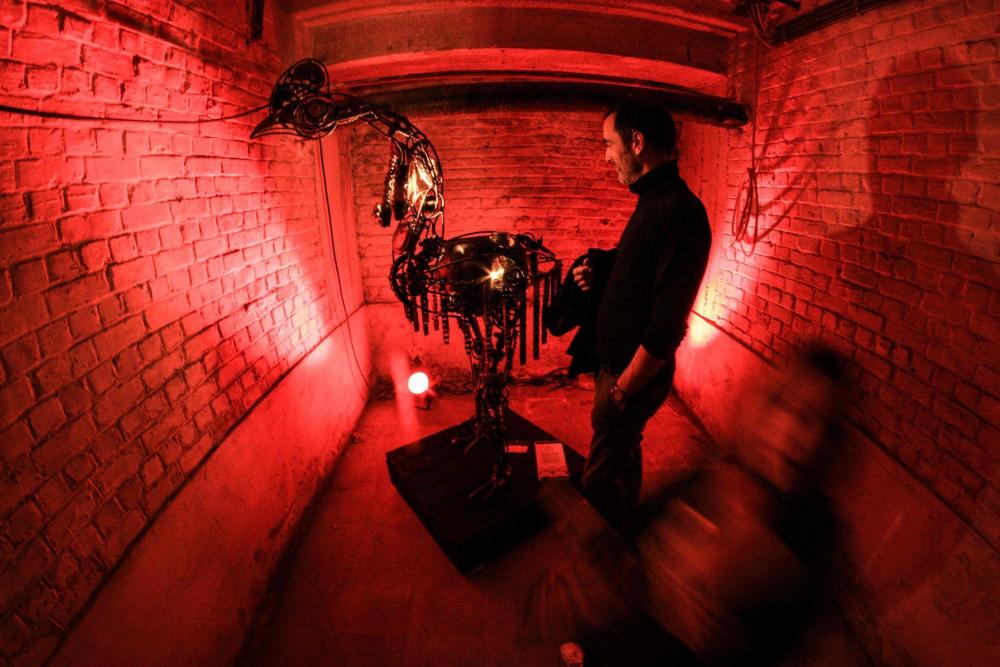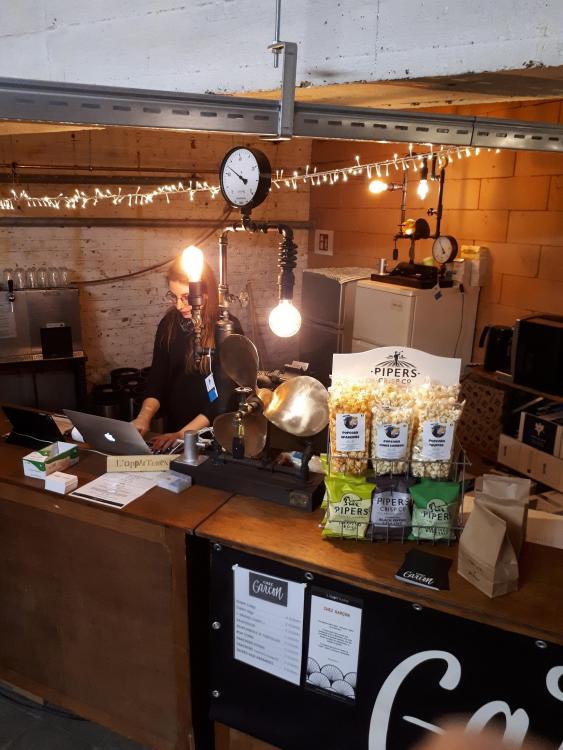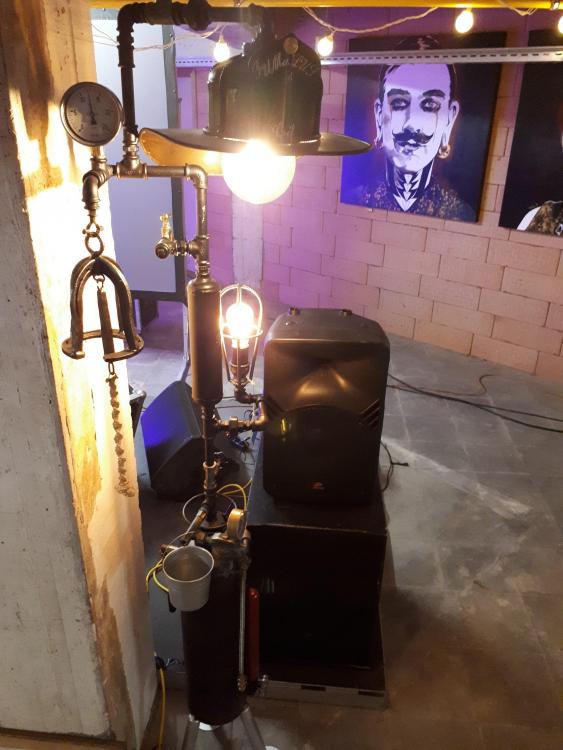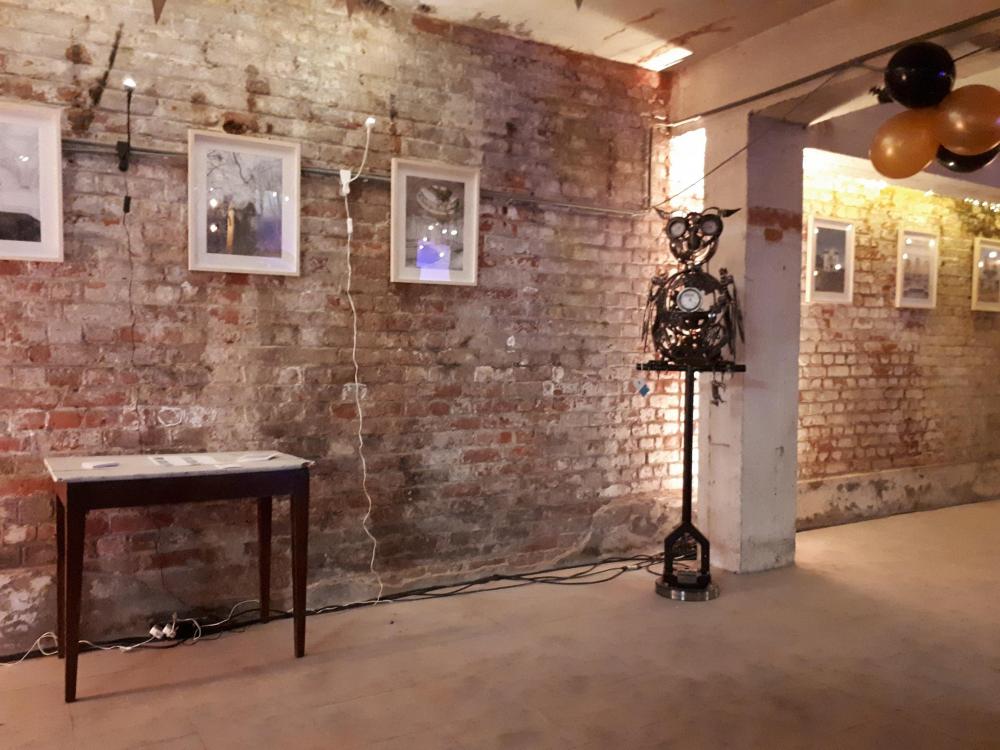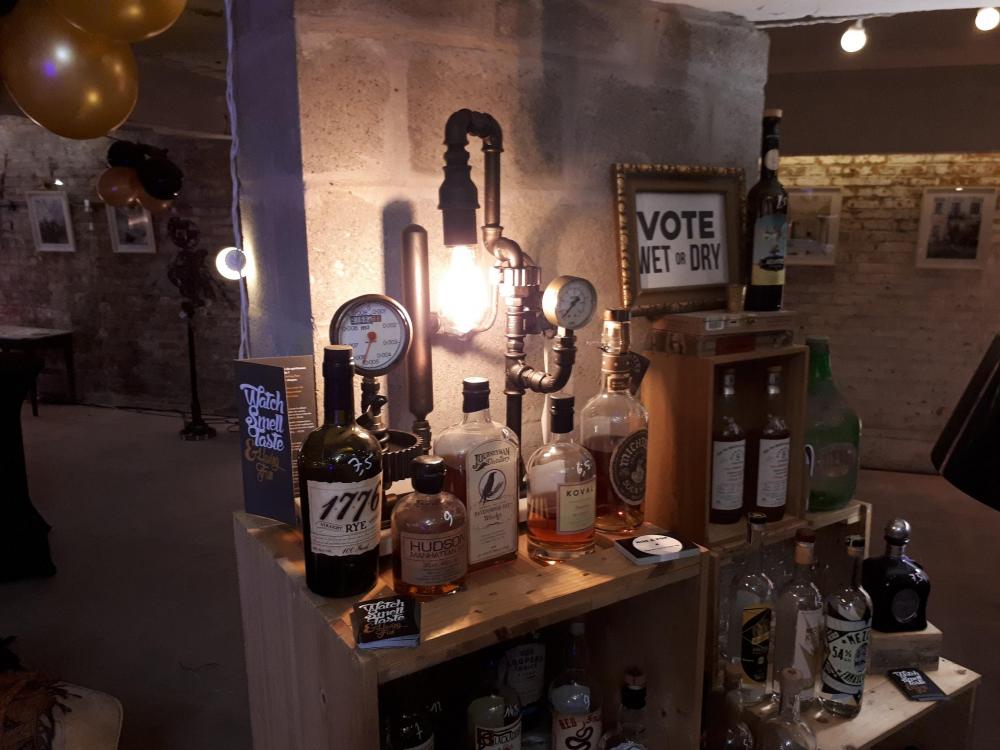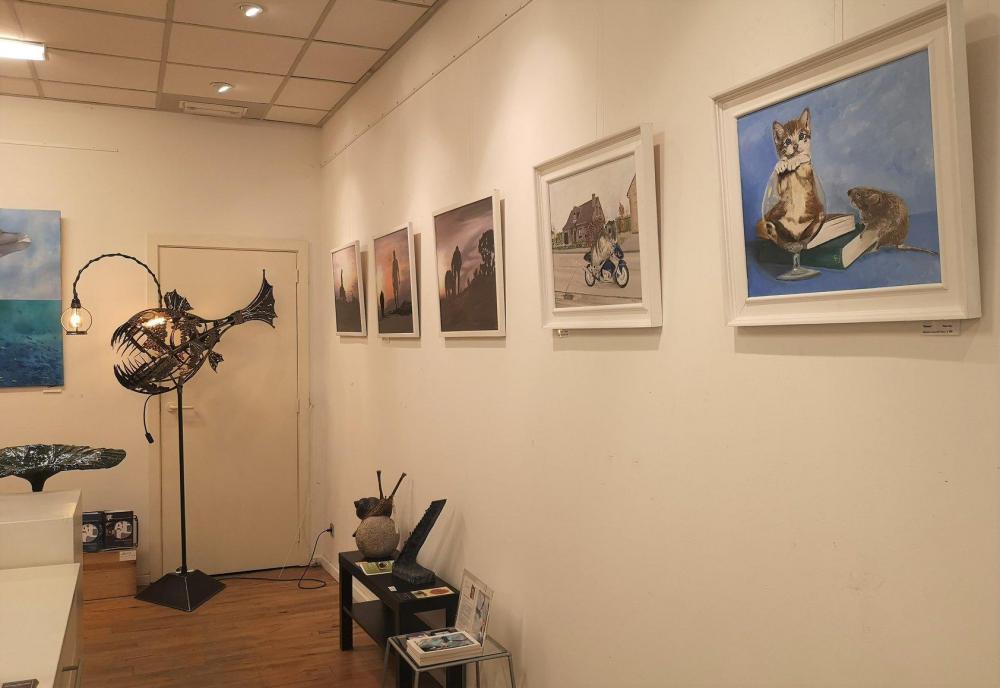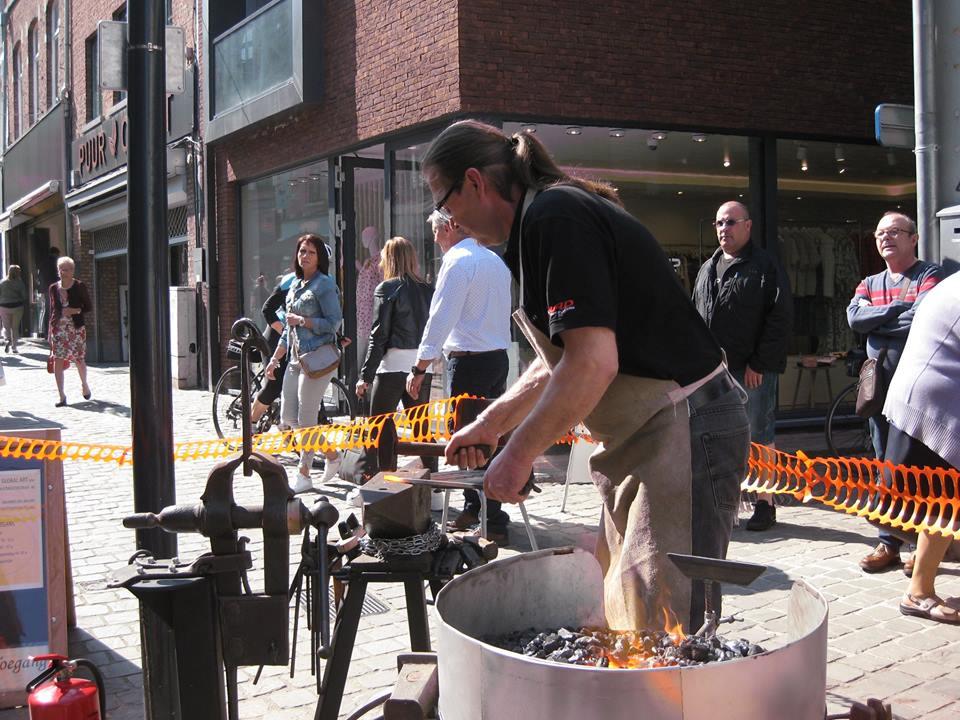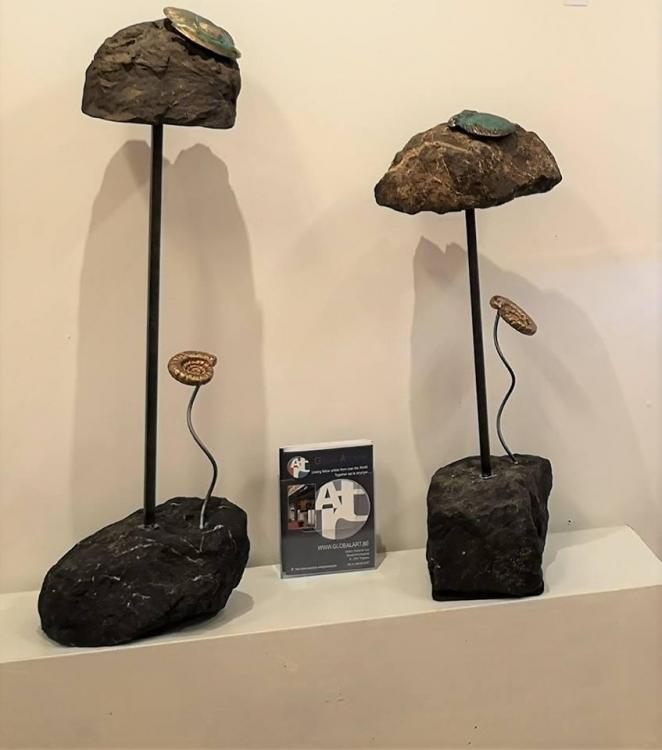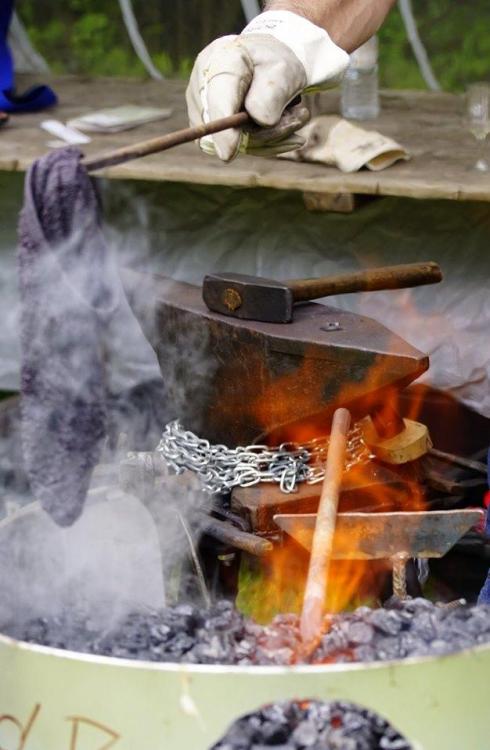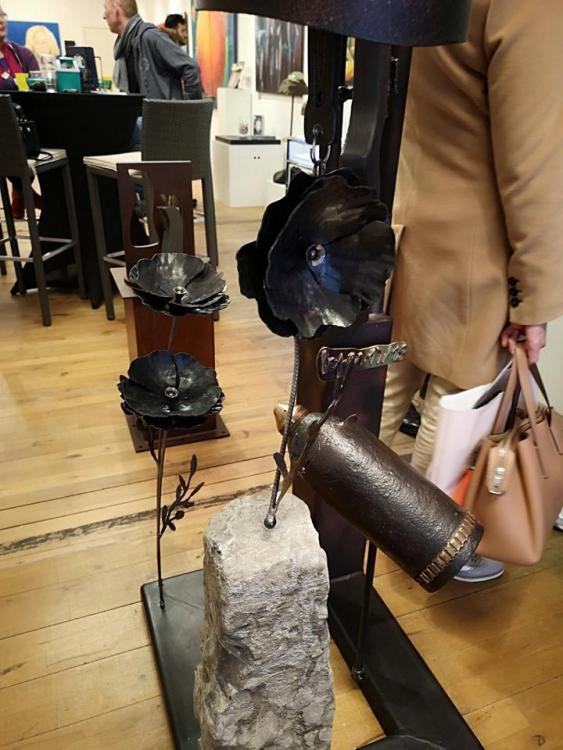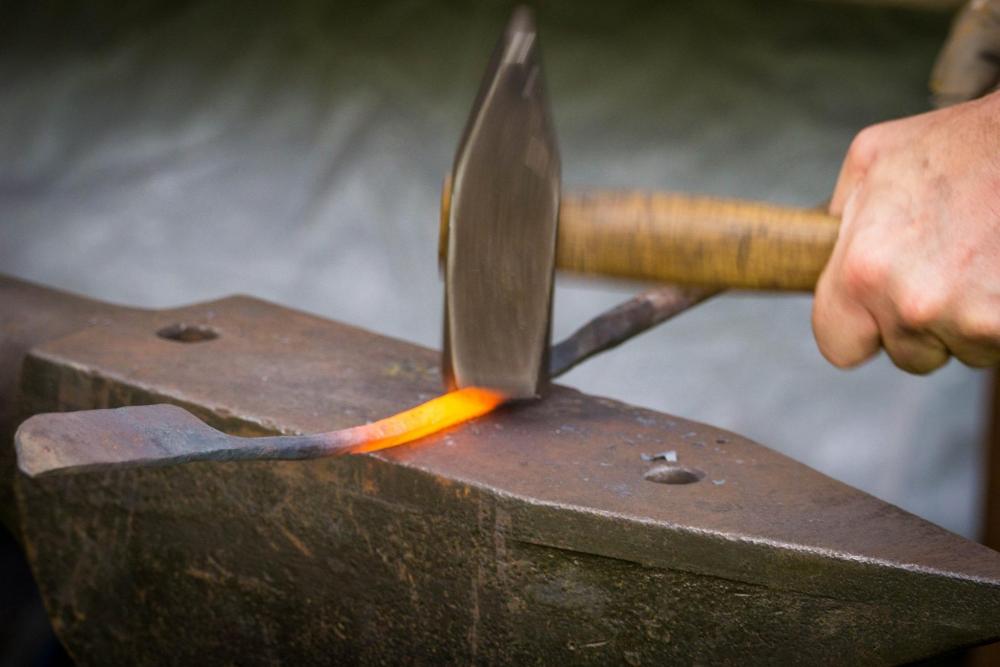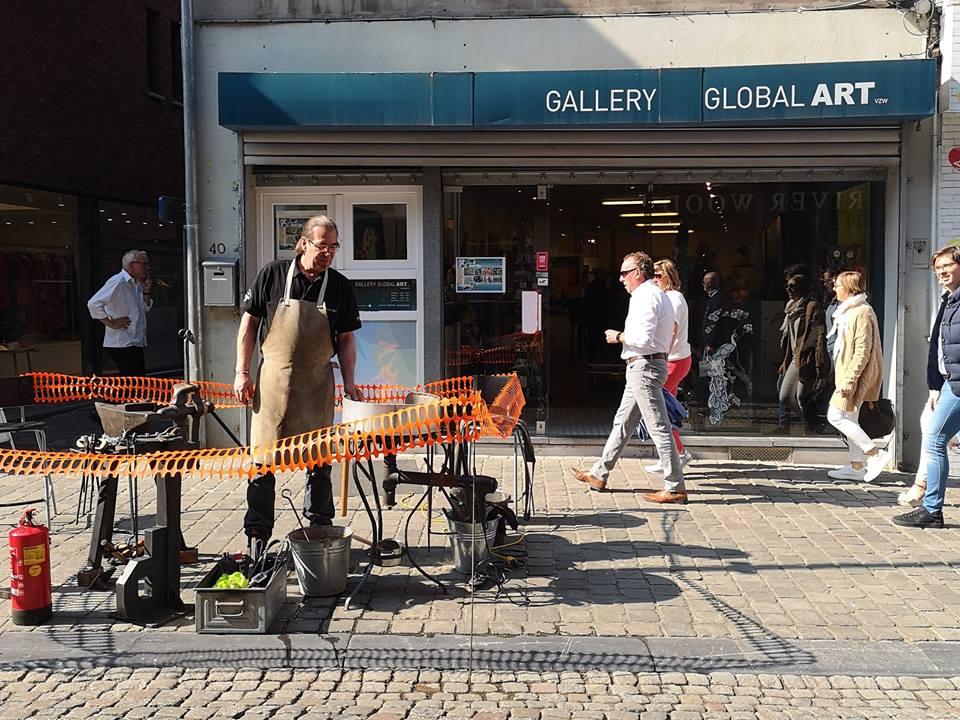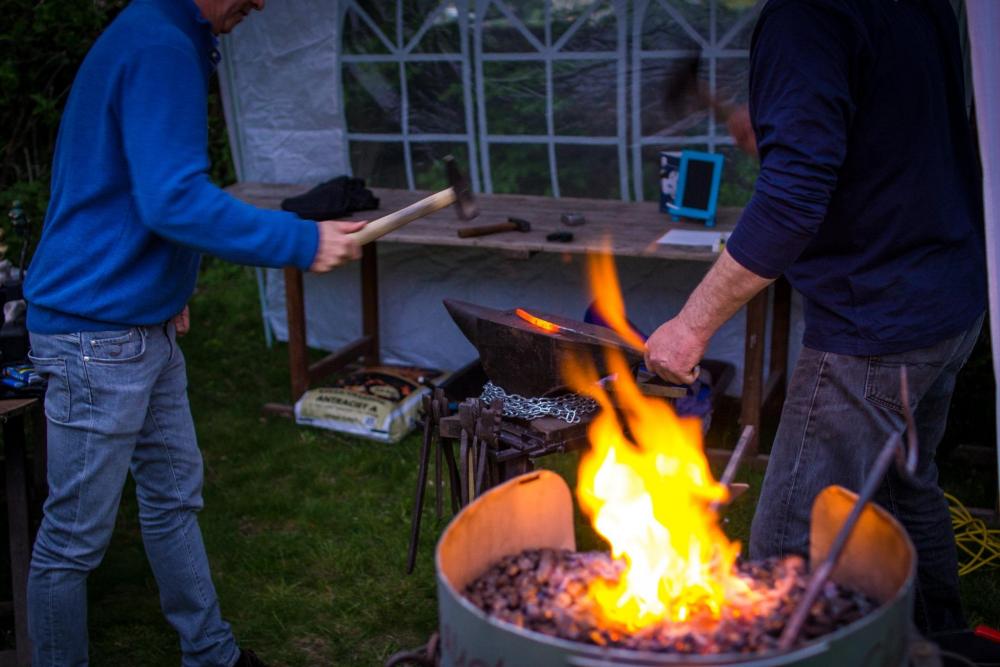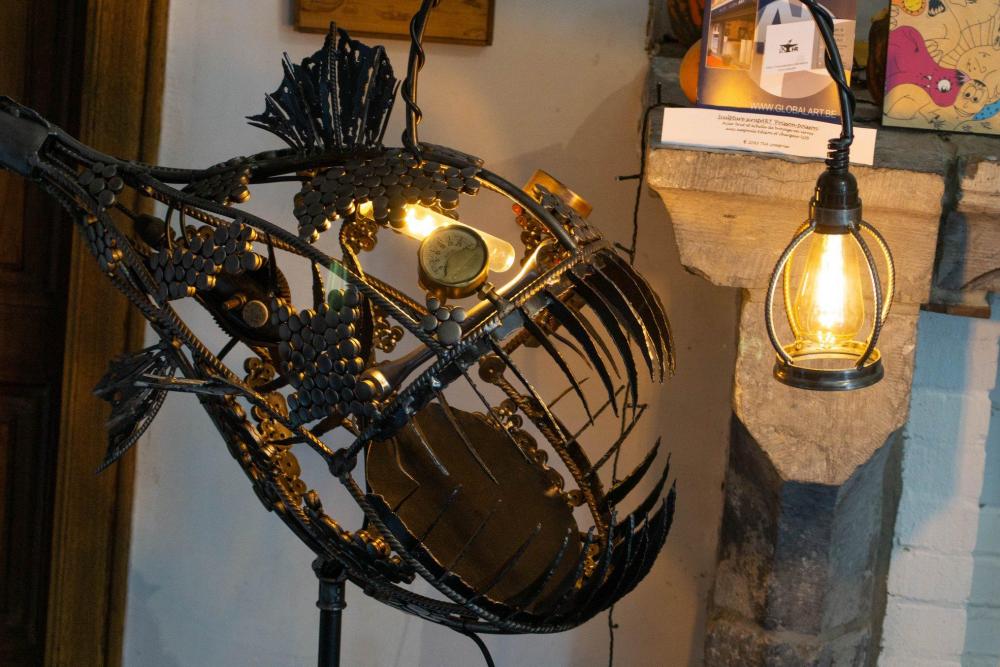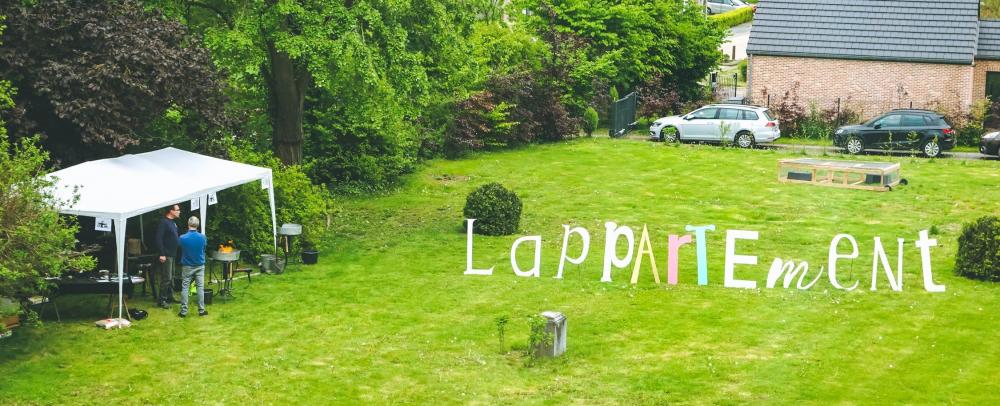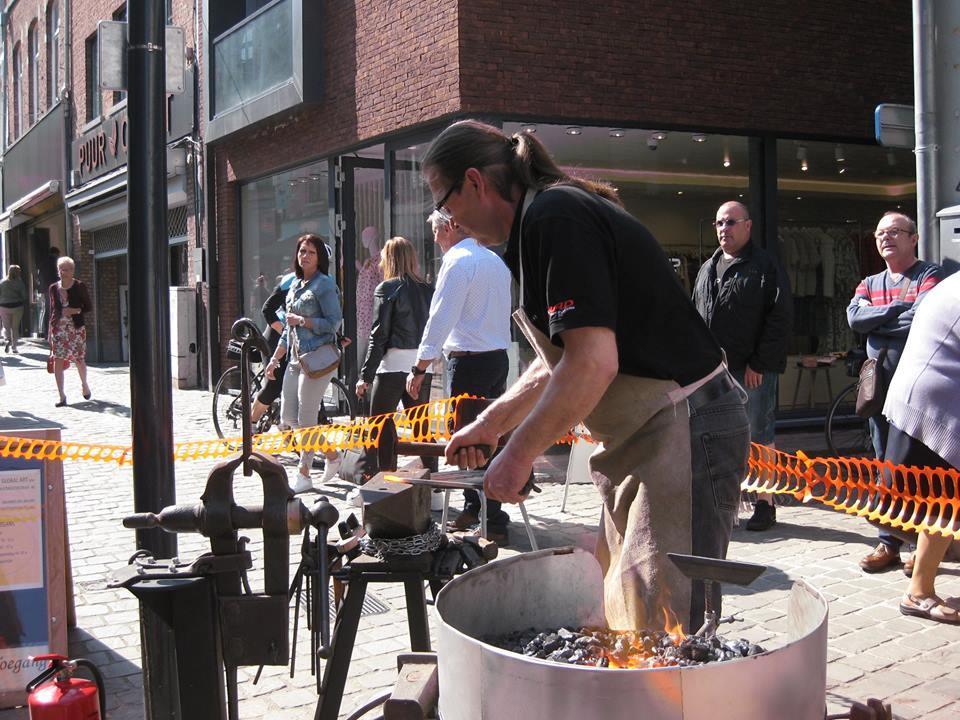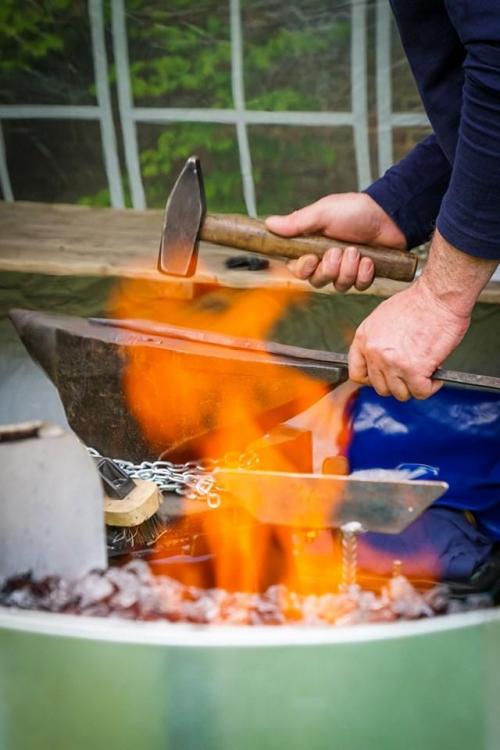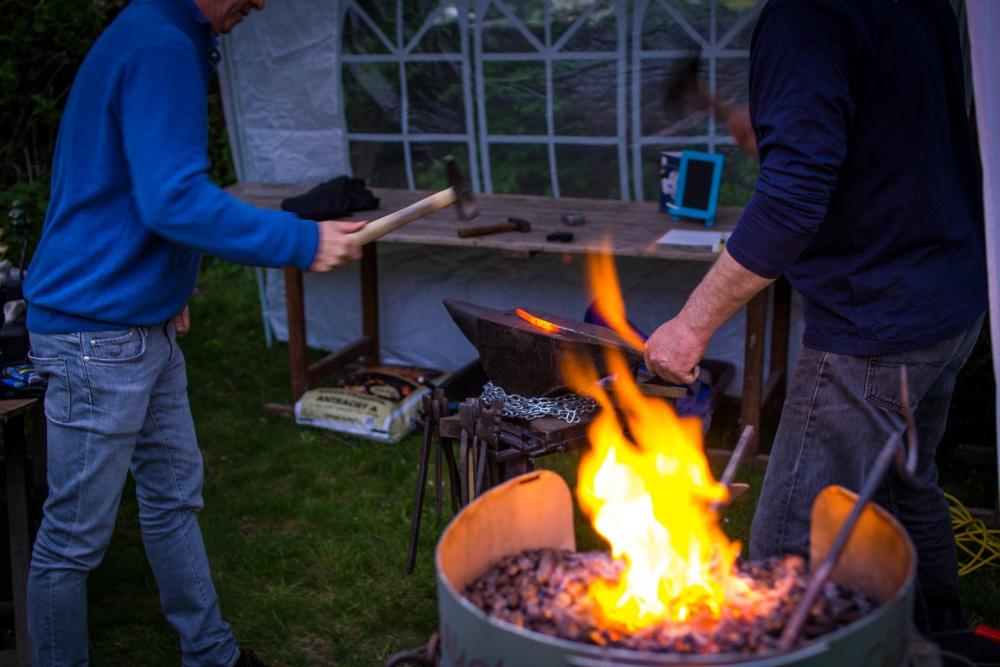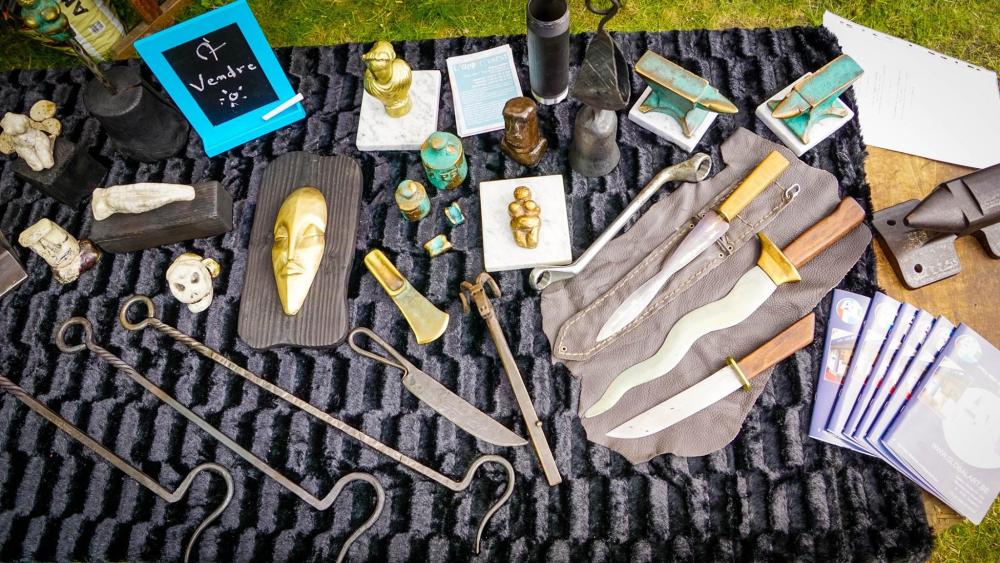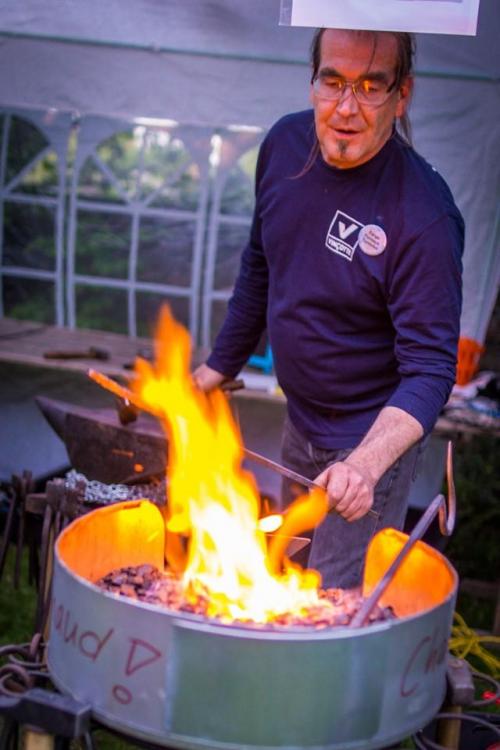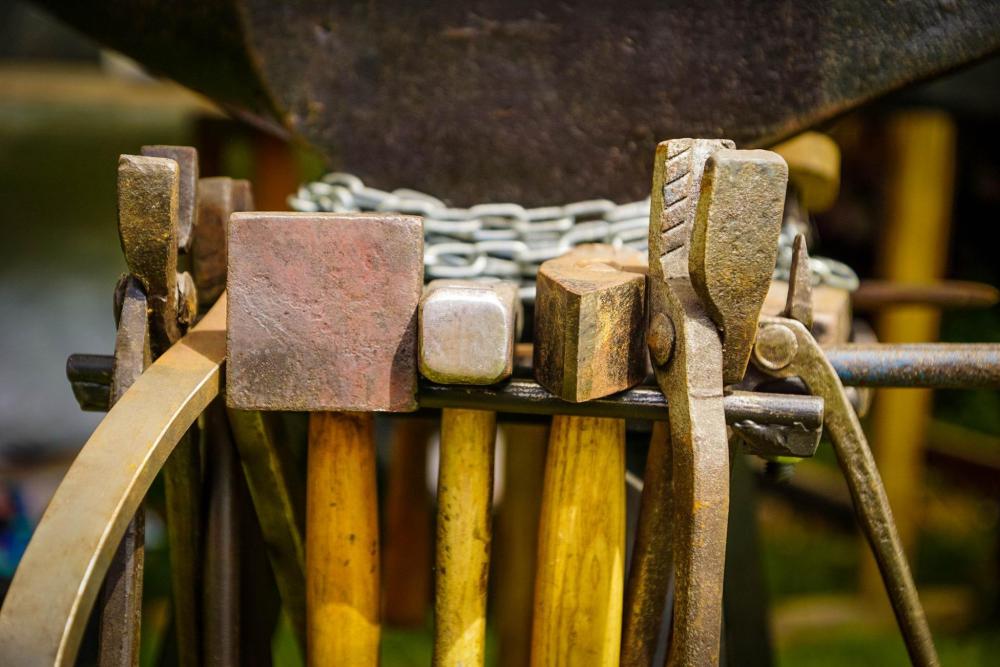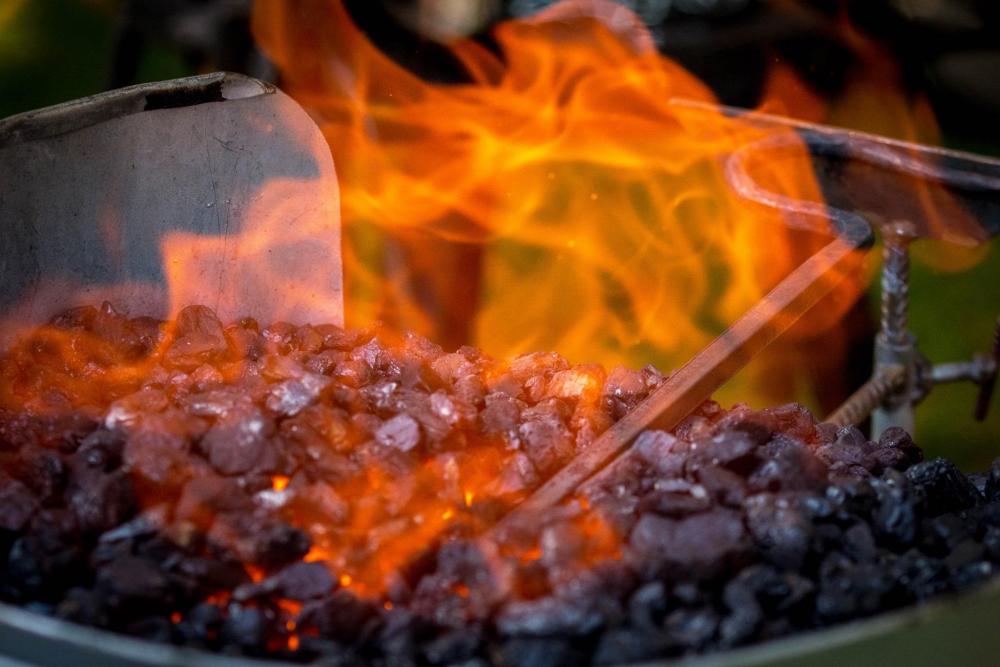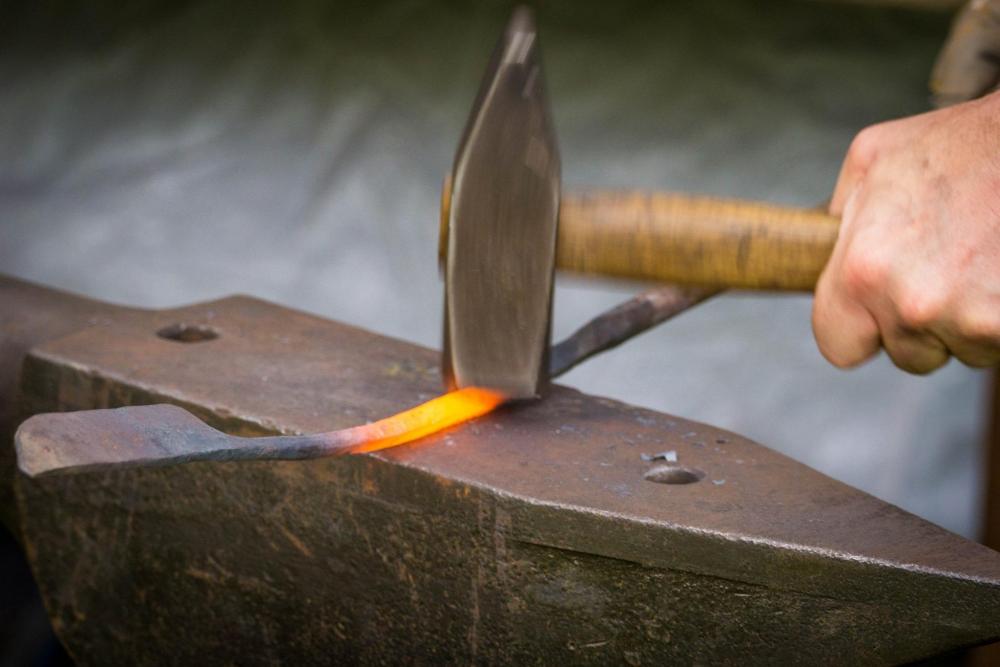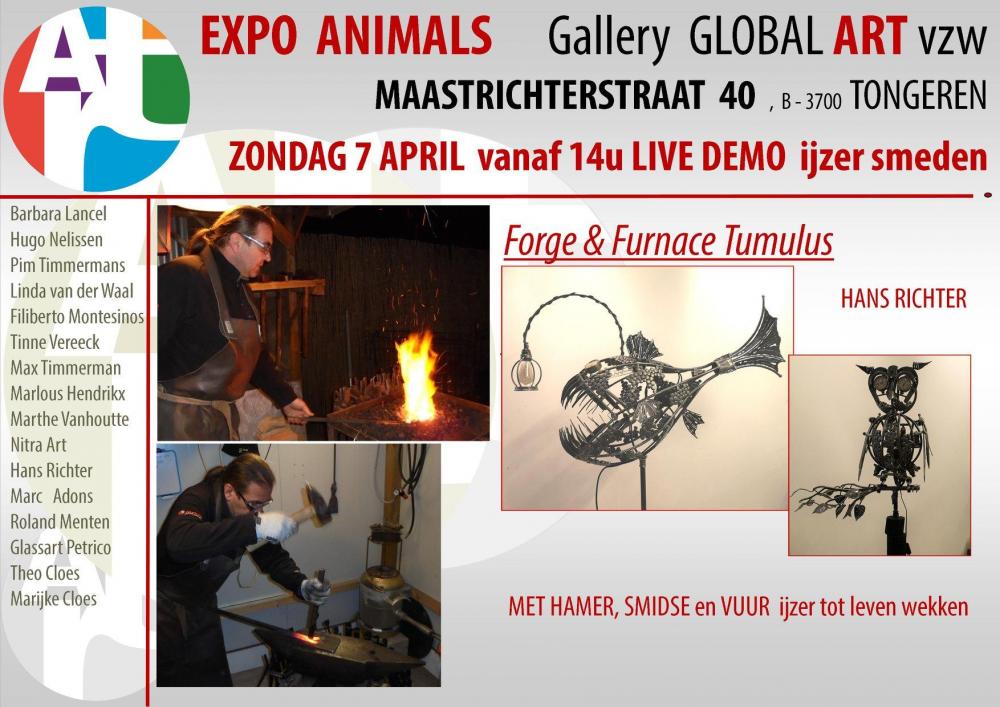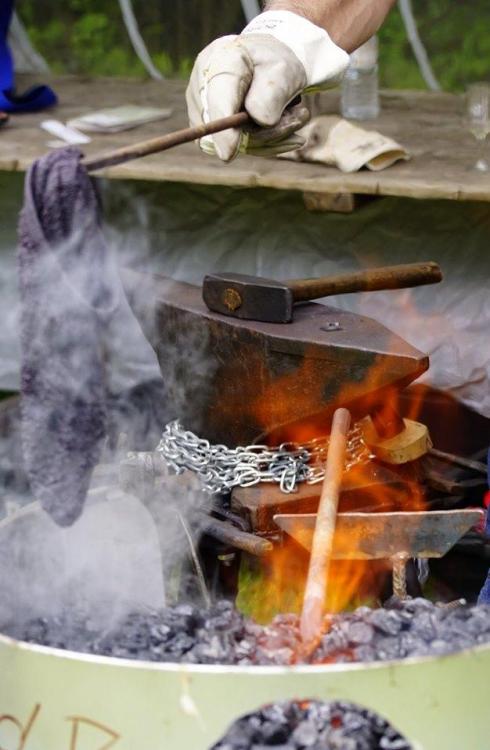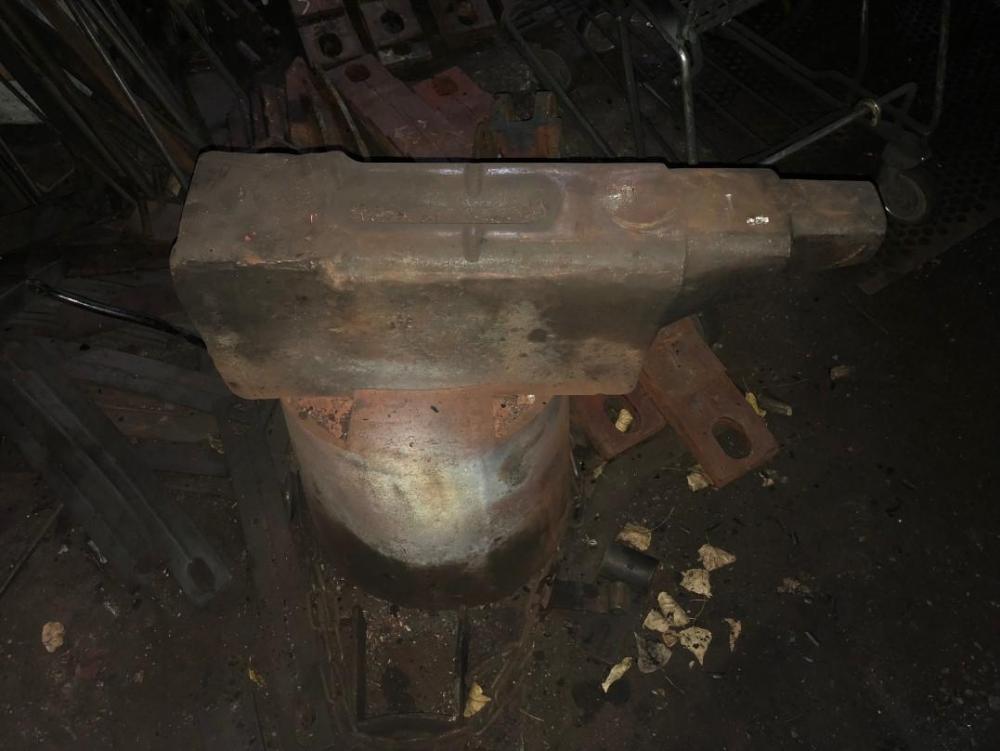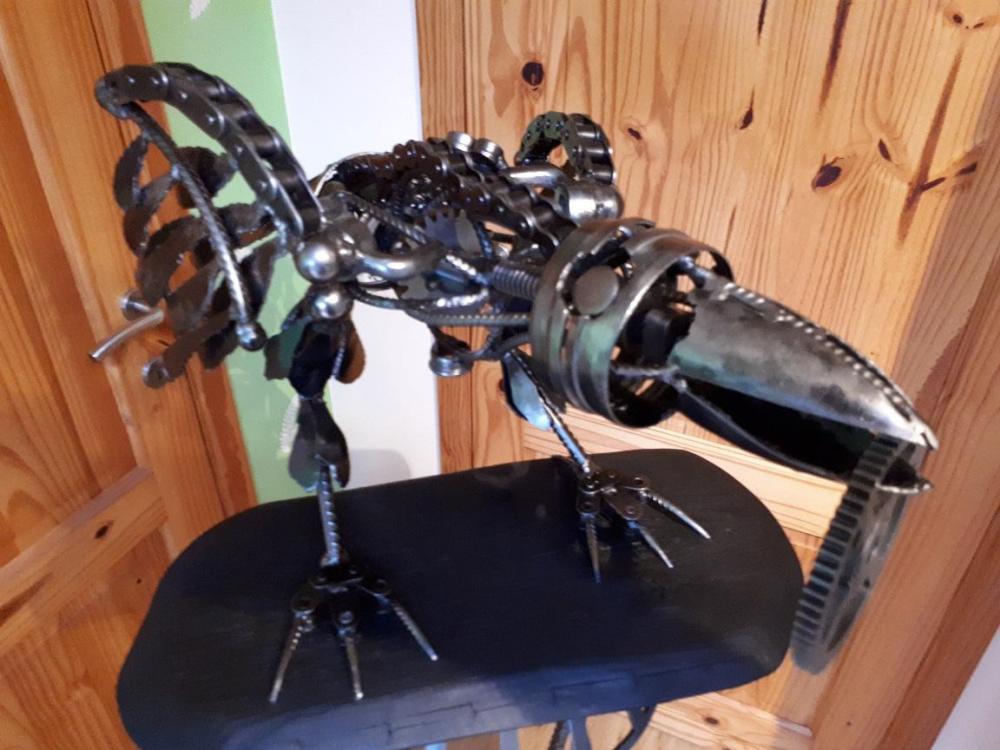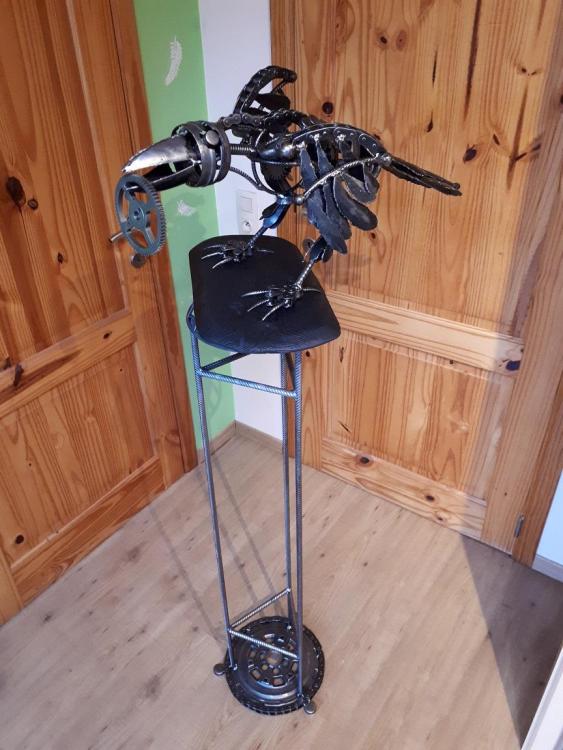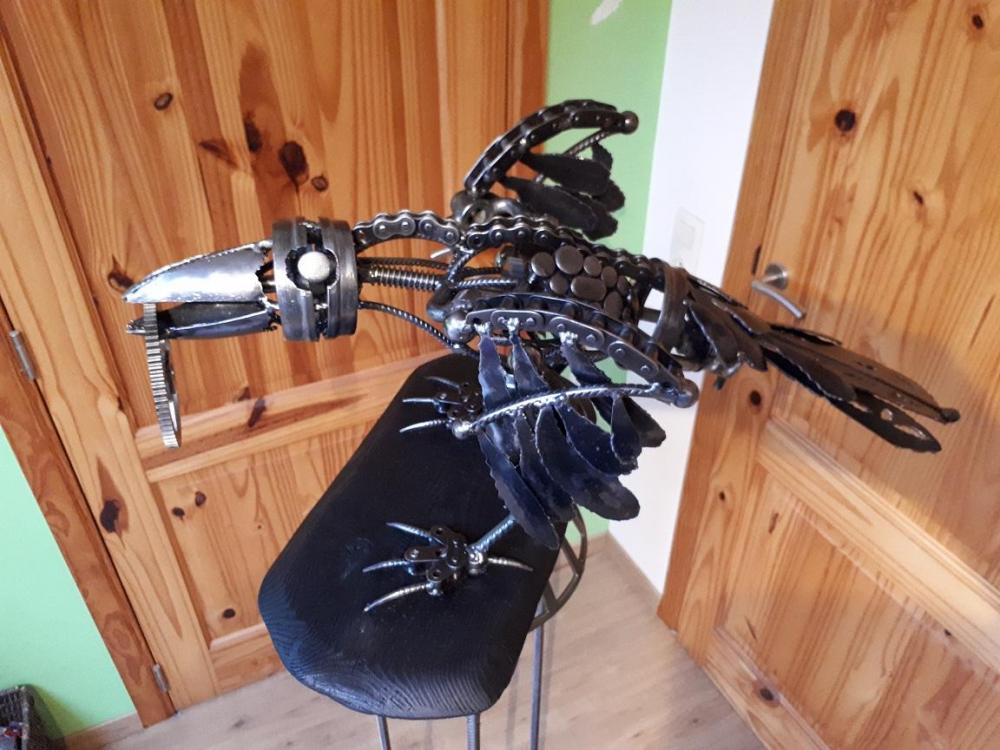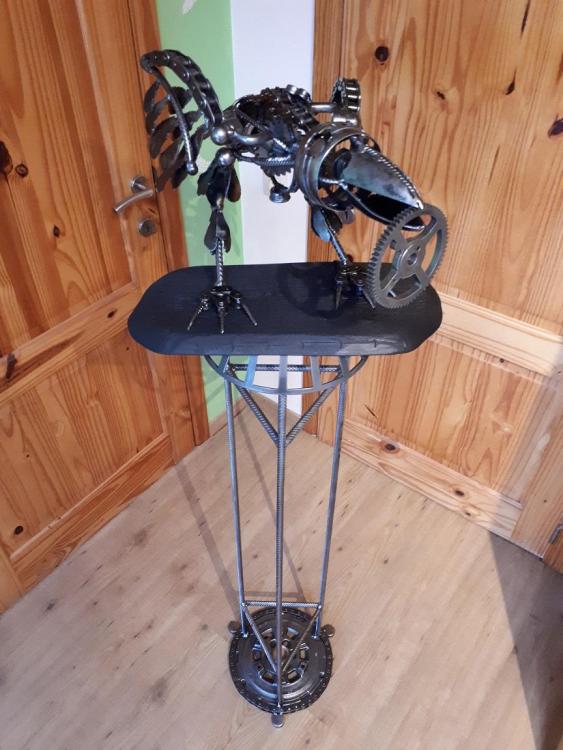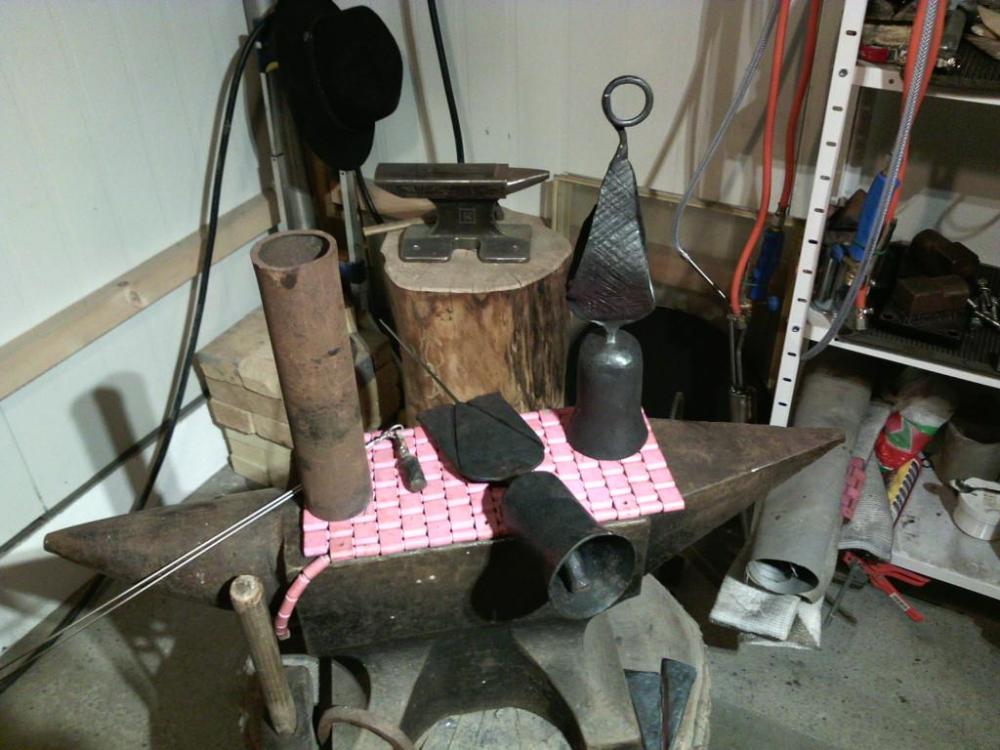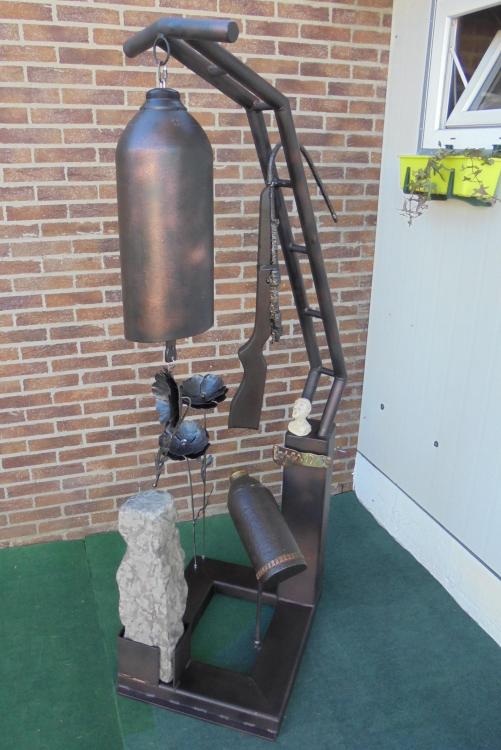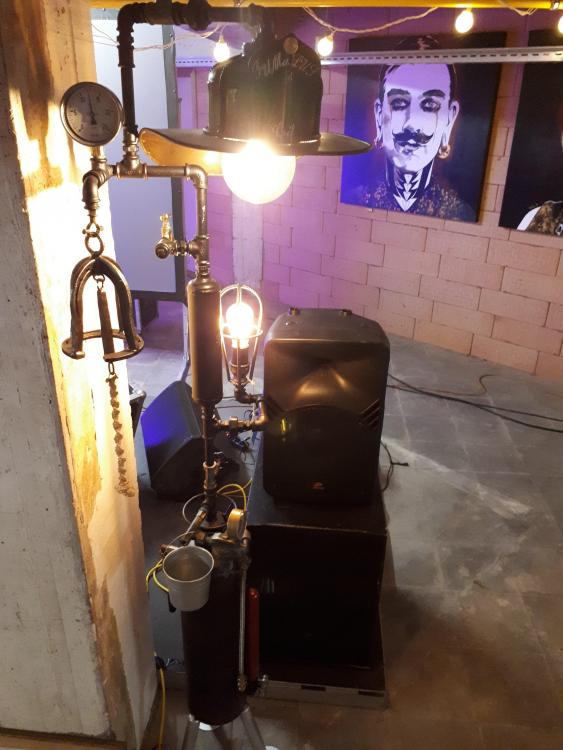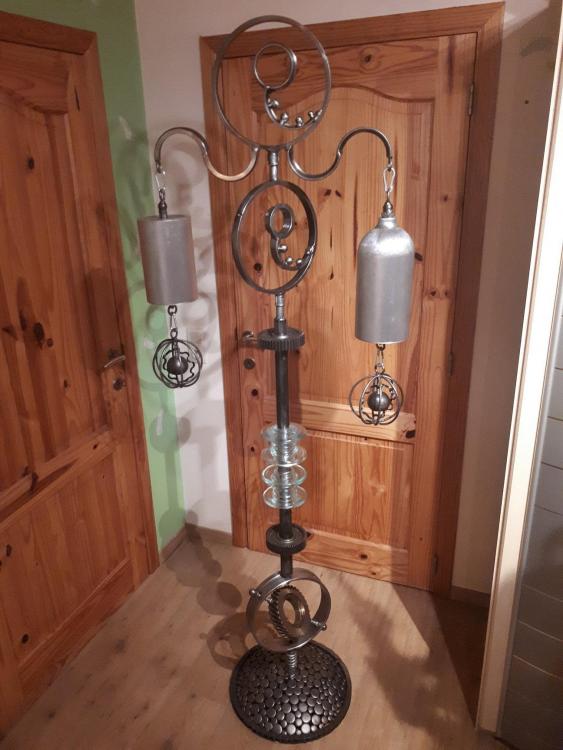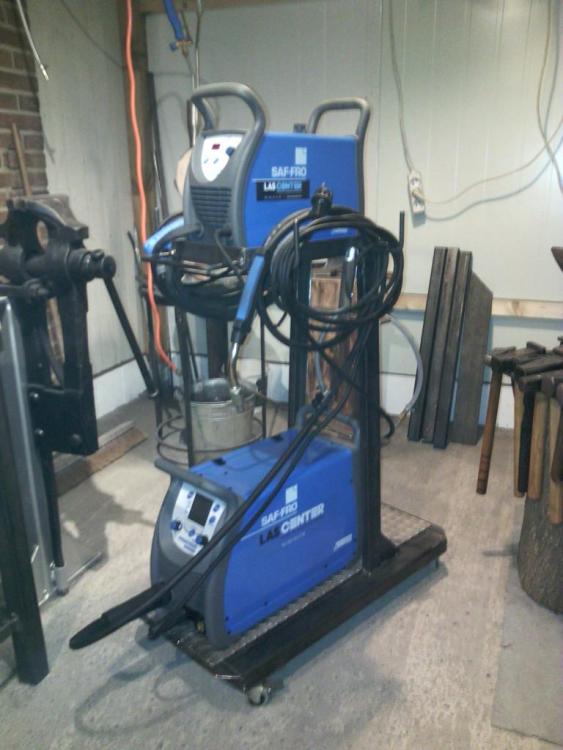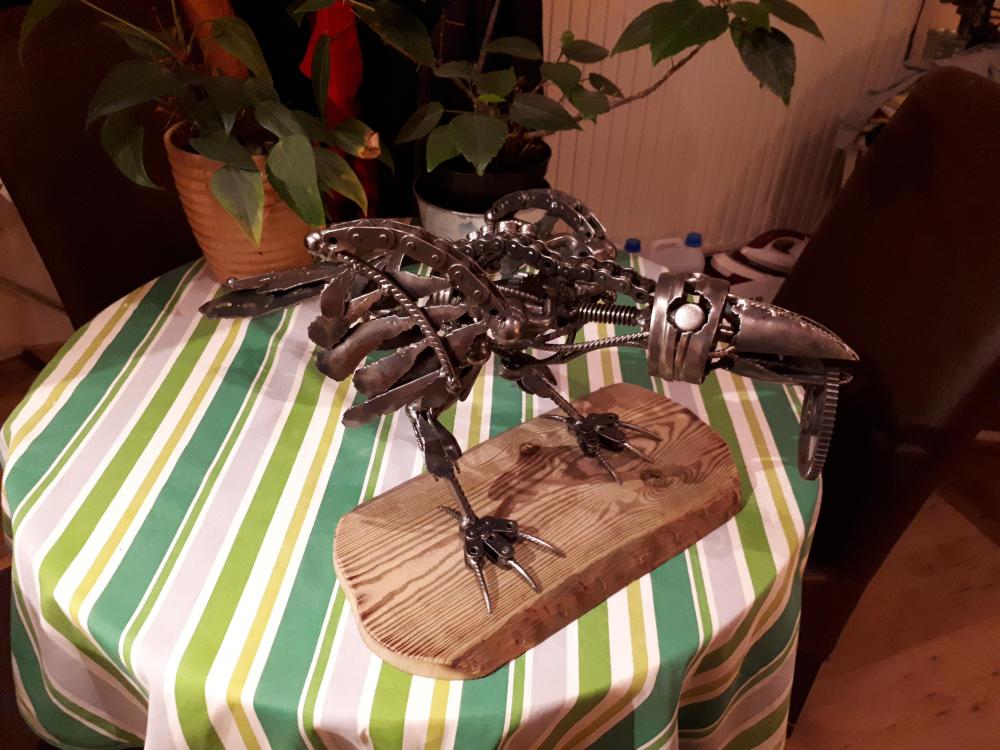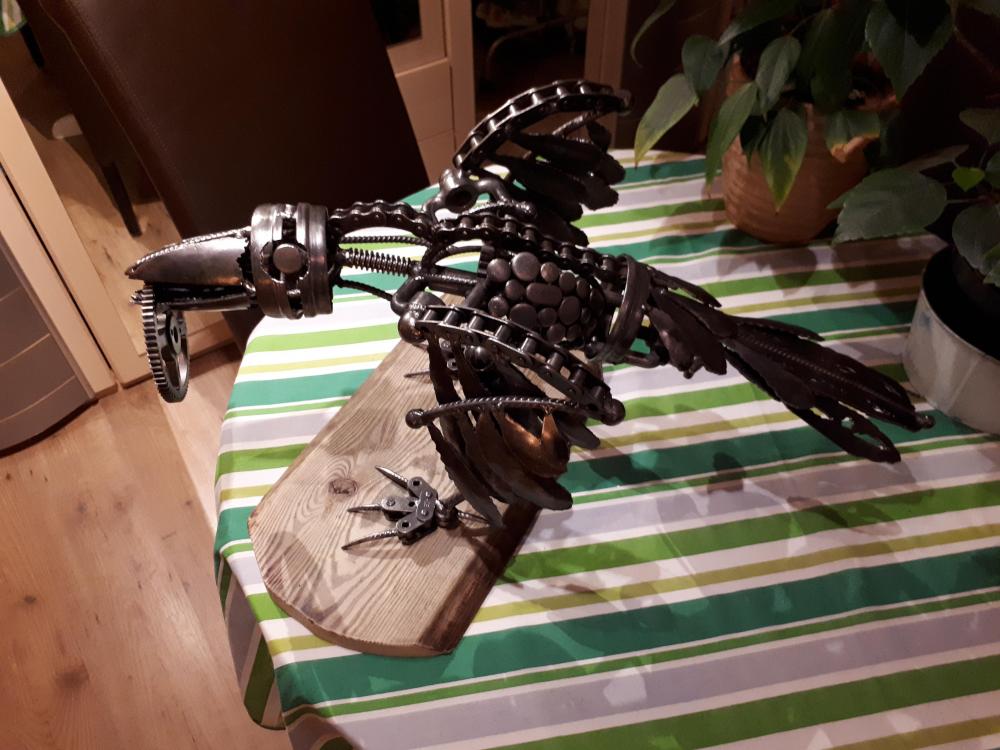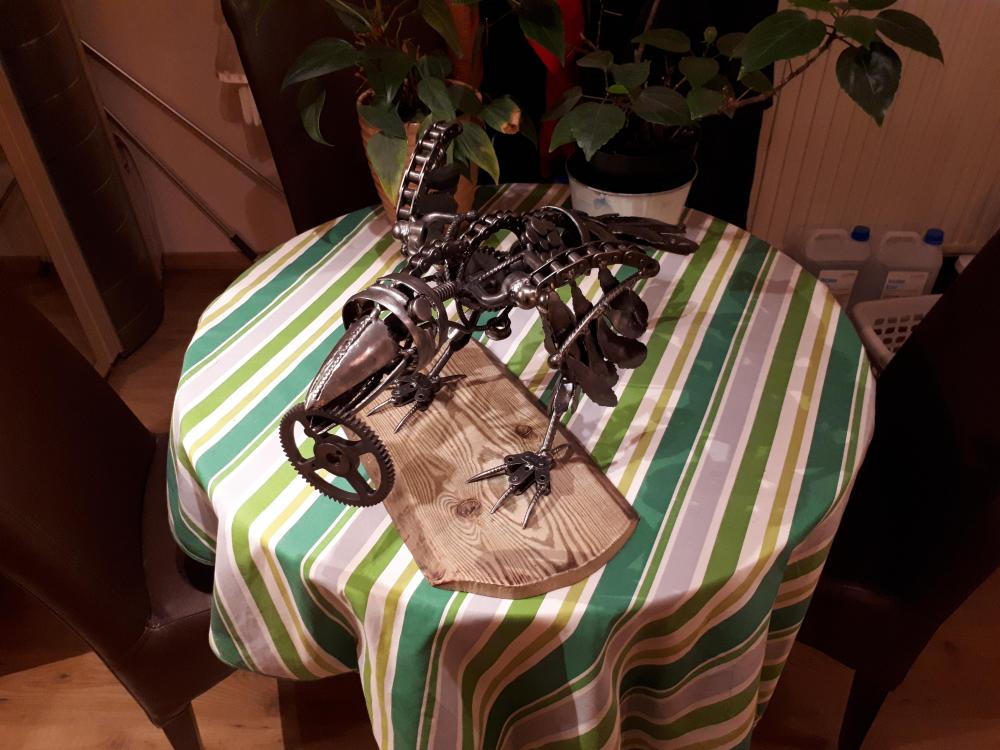-
Posts
493 -
Joined
-
Last visited
Content Type
Profiles
Forums
Articles
Gallery
Downloads
Events
Everything posted by Hans Richter
-
Below some atmospheric impressions of the demos, exhibitions, events and vernissages in which "F&F Tumulus" participated in 2019. Highlights include, for example, the Demo-forging in Tongeren under the feet of Ambiorix, a three-day event in a castle transformed into an art oasis, and an underground event in the heart of Liège in the catacombs next to the river Maas. The result for the necessary use of "blood, sweat and tears" was a lot of attention, many positive reactions and above all a lot of interaction with the audience present . A number of interesting leads, invitations for 2020, and a broadening of our network resulted from this. Portfolios of the various collections (Steampunk Lamps and Animal Collection) have been prepared. Wish you a lot of entertainment when viewing the photos. Cheers, Hans
-
That looks very good to me, a nice blue print to deserve. Searching the schema for hose brake protection and flame arrestor (despite of the discussion if there are necessary for Propene or not, -in the EU they are still common practice and I use them on my gassers and furnaces) Good luck and Cheers, Hans
-
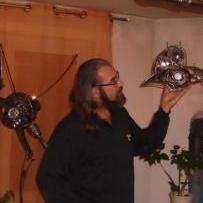
Need to vent for a second
Hans Richter replied to Manno's topic in Blacksmithing, General Discussion
After my humble opinion, the best tongs to hold a work piece while forging -are still the blacksmiths hands. Please have mercy with my simple mind. If I start forging happens this always with a save overlengthen of the work piece in question to handle the stuff as easy as possible. But first in the end and after cutting in to size my tongs will be used. -

Show me your sales or demo booth
Hans Richter replied to Glenn's topic in The Business Side of Blacksmithing
Tube is welded to the scarify plate (incl. Inconel grill bars in air supply <1/2 inch gaps), plate and tube stomp is threated with 4 bolts to the brake drum. Increase the length of the air intake from the 2 inch tube (feed by hair dryer) up to 20 inches because of the crawling up heat. Regulate ember nest and air flow by blow switch position of the hair dryer and an open ash dump + soft extinguishing the borders of a to big fire by water soaked rag fronds you already know from my fire keeper set. A stable clinker poker take care of the rest. Regarding the legs of the forge stand, I simple use some bended leftovers of vertical balcony fence bars I use ones for another project. -

Show me your sales or demo booth
Hans Richter replied to Glenn's topic in The Business Side of Blacksmithing
Thank you Jennifer, Aric, IDF&C for the compliments . Indeed, usually work under the open sky with the possibility of being able to hide under a (private) booth or party tent in bad weather. In this case, the organization of the 'L apARTment exhibition had set up a 10 x 20 ft tent for me for two forging arrangements (anvil and forge, one for me and one for the public). The photo shows the setup for the start of the exhibition / demo. As far as the famous ring wrench is concerned , it is next to the knives to show the public what some blades are made of (CrVa-steel). Had already shared some photos of the ‘travel’ forges on IFI in the past, nothing special about a Ford Mondeo brake drum and a couple of 2-inch tube fittings on a light but stable pedestal. The whole is easy to disassemble and transport without tools. Have a nice day, Hans -

Show me your sales or demo booth
Hans Richter replied to Glenn's topic in The Business Side of Blacksmithing
LOL -
Fantastic vice, I'm still looking for this kind of 'Big Berta' (like Marc's) for my workplace. I only have the problem that I sometimes also use the vice for welding and grinding work, with the result that the necessary traces of use are left behind. I have been able to restore this so far to weld the jaws with 309 cladding and then to update it. Will also have to look for a 'sacrificial bench vice' in which I will perform this work in the future.
-

Show me your sales or demo booth
Hans Richter replied to Glenn's topic in The Business Side of Blacksmithing
Just wanted to share some impressions of the sporadic demos and both of Forge & Furnace Tumulus that were done in 2019. In particular the demos in the Wallonia with many interactions with the public are very nice, and I made many small and large 'boys' happy with their own forged fire poker or mild steel ladies knife. Was oblivious to participate as an ‘eye catcher’ and did not ask a cent for the fired 80 lbs coal and the workpieces manufactured together. The larger work and the sculptures, however, were also exhibited and I was able to amortize the effort from these proceeds by selling several of them. -
Thank you Chris for your nice response. Very happy that you like my creations. Apologies for the late responses, but given that English is not my native language, it requires some work every time to formulate an appropriate response. I sincerely hope that this is NOT seen as rude by some forum members because my contributions sometimes take time and effort to add something meaningful to some posts including pictures and others. Had understood that you too have been absent from this wonderful website for a while, but am glad that you too are back. Read your comments and feedback with much pleasure.
-
-

Long awaited addition to the shop.
Hans Richter replied to Irondragon Forge ClayWorks's topic in Building, Designing a Shop
Glad to hear that but not supriced -
Have looked on several German websites for similar anvils and find a lot of references to specific anvils for forging leaf springs. These anvils are also provided with similar trenches. Unfortunately, I don't know what these (wells) were used for and the exact purpose. But since many historical cars and carriages were carried by leaf springs, it is not surprising that an anvil like this appears here and there. However, I am sure that there are enough specialists here in the forum who can decipher this secret.
-
A very nice collection, wish I could lay hands on a few pieces. Some models are very suitable for use as molds in a flask (sand, coop and drag) for casting in bronze or brass.
-
The White Raven or better "Evolution" is now completely ready. Made a simple pedestal for him. The plateau again finished in shou sugi ban and double-boiled linseed oil. Raven and pedestal brushed and sealed with clear varnish. So the pure steel color, the patina and the mill skin will hopefully be preserved for a long time. And beware don't touch his catch . David - I think the shipping costs alone are worth more than material and working time together, but if you wish, I can send you detailed photos and you can put together your own raven . Dear Aric - the base of the pedestal is made of a car clutch plate, perhaps a new destination for some parts of the Jeep . But without fooling around, I hope that in the meantime your car it is running well again.
-

Show me your dinner gong/bell/triangle
Hans Richter replied to ausfire's topic in Blacksmithing, General Discussion
A very nice collection of noise makers. My compliments to all makers and thanks again for the inspiration to Ausfire. I myself have never made a triangle so far. But this one is on my wish list like so many other things. In attachment only pictures of the Bells that I have made so far. To start with the dinner bell of 2 inch tube that I make on demos but also use as a give awway. One of these bells is used by Lisa to call me out of the workshop from the back door when it's dinner time. An oxygen gas cylinder was used as a bell in the sculpture 'Ypres 17/18' and it is intended that the clapper be gently struck 700,000 times for each fallen soldier there (now happening in a technical school where the sculpture is exhibited). I made horse shoe bells for the Steampunk 'Firefighter lamps'. Here I had to make a lot of effort to make it sound. The material turned out to be too soft after being slowly cooled down to get a pure sound out of it. Through the reheating (red heat) of bell and clapper, and the quenching in oil, I was able to remedy this in a little. After inspiration from our IFI brother PSA, now and then also working on wind chimes. These usually arise from thick-walled CO2 fire extinguishers and scrap that is available. In this case, conveyor chains, punching caps, ball bearings, insulators, etc. Have a nice sunday all, Cheers, Hans -

Long awaited addition to the shop.
Hans Richter replied to Irondragon Forge ClayWorks's topic in Building, Designing a Shop
IDF & C, that looks slick, to prevent any annoying leaks between the two roof connections, I had the connections between the existing roof and the new roof of our extension done by a roofer. Those men have the most sense where possible drip gutters and rainfall can occur. -
Would invite you to be part of the development of the Forge & Furnace Tumulus gassers over the last 4 years. After 25 years of forging only on coal cooks fraction 16-25, I started developing my own gas forge at the end of 2016. Like many other enthusiastic beginners, this gasser must have be huge and at least run at two burners. All this resulted in a box forge with the inside dimensions of 1 ½ - 2 times the size of a shoe box. The gasser was made of 3mm steel plate and an interior of 3 inch thick hard bricks. The whole was fired by two 1,25 inch diameter Venturi burners with chokes and separate valves. Until then I had (badly) copied some tips, inspiration and technology of some posts on IFI. Anyway, I took ‘white hot’ forging blanks out of this gasser, but for what price. The hard bricks turned out to be energy-consuming heatsinks, the large interior space just as well. The flame popping directly onto the blanks and the oxygen-rich flame also resulted in a thick fat layer of mill scale on the workpieces and a ‘fantastic’ dragon breath (melting the roof). Last but not least, I am happy that a CO alarm that was purchased on time just informed me that the CO concentrations in the smithy of far above 160 ppm's were being reached. The forge was then discarded and rusted now in a dark corner of the shop. After that and after I read some posts better, I started optimizing my burners by converting them into forced air burners using dried compressed air and a needle valve. The next step was my beloved 'Miss Piggy' a gasser using an 18 lbs Propane tank made of thin hard bricks as a flame face and cast behind with chamotte clay. However, a 4 x 4 x 9 inch large interior limited the space and it was not even possible to place a horseshoe in it. Also with this gasser the burner was still placed vertically (lots of mill scale) above the workpiece and the chamotte also did not last long. Anyway, I still use this forge because of zero CO emissions and its high efficiency (2050 F within 15 minutes). The last gasser was built from a 25 lbs propane tank and is a larger end pimped version of Miss Piggy, equipped with an insulation of 2 inch superwool behind interchangeable thin hard fire bricks. The burner is now placed at an angle of 45 degrees and ensures an even heat distribution through a Vortex circulation in the hexagonal chamber. This is the short cut of my story, issues like- frozen gas cylinders, distances hot parts to rubber hoses, ceramic fibres are no flame face and other safety items to overcome are already disused in many other threats. So far this gasser is the one who offers my needs through efficiency, durability and just enough space. However, that does not mean that it is also my last gasser. The only drawback that I have noticed so far compared to a solid fuel fire is the lack of ability to only heat parts of your workpiece that is sometimes needed for upsetting and hardening chisels in one step. What are your experiences? Cheers, Hans
-

Long awaited addition to the shop.
Hans Richter replied to Irondragon Forge ClayWorks's topic in Building, Designing a Shop
Congrats, with the 168 sf or about 15 square meter your 'addition' have exactly the same size as my whole shop at all. Wish you lots of fun and much nice work pieces to build (forge) there. Cheers, Hans -

Possibly Pine Anvil Stand
Hans Richter replied to Drunken Dwarf's topic in Stands for Anvils, Swage Blocks, etc
There is nothing wrong with using pine for an anvil stand. It is only lighter, softer and less durable than the hardwood I use in the form of oak stands (2x) and one made of beech wood. Regarding the fire hazard, the wood will charr on contact with a hot workpiece or tool upon contact. Maybe a little more than with hardwood. To slow down this process and ensure that the surface of the stand becomes less fire-sensitive, the idea of Mark to use shou sugi ban is a very good idea. This method has been used in Japan for thousands of years to protect softwood against flammability, water absorption / rot and insect infestation. I also use shou sugi ban as a decoration and extra dimension when treating my pedestals and wood elements for my sculptures. As far as Borax is concerned, it is almost as difficult for private individuals to get it as powder in Belgium as in the UK. However, I have discovered that it is available in any good pharmacy. In addition to fire welding, I also need Borax as an addition to my bronze casting. According to the pharmacist, in addition to the treatment of previously mentioned eye infections, it will also be good against sweaty feet. If everything does not help, Borax is still used as an additive / oxidation inhibitor for brazing and a well-sorted welding material trade has it in stock (in large packages) -
-

Using Casters for Effective Use of Space
Hans Richter replied to JHCC's topic in Building, Designing a Shop
Very good 'movement', I have put the F&F Tumulus casting, welding and ceramic equipment on 'rolls' or transport carts from the very beginning. Partly due to a lack of space in our workshop. However, two things that are very important for safety reasons. Point one, depending on the floor of your workplace, it is important that the wheels are large enough to roll over unevenness. Top-heavy equipment in particular tends to turn over when too small casters get stuck in slots or holes. Point two is a good brake or lock during use. It is very dangerous if your machinery starts to roll unintentionally if you are processing a glowing piece of material or in my case 'liquid soup' at 1200 ° Celsius. -

What did you do in the shop today?
Hans Richter replied to Mark Ling's topic in Blacksmithing, General Discussion
Dax, glad you'r not hurt. -
Good work, realy like it.
-
Almost done, the 'Witte Raaf' (White Raven), again the balance of indicating and omitting. This beast is also ready to cuddle after a final bath in varnish or double boiled linseed oil. The pedestal must again be made simple from sober materials so as not to distract from the creature. Be sure that the raven will find a good place in our (or other people's) steampunk world. By the way, Lisa is already claiming him for her rooms, but I am not sure if there is still enough room between all the accumulated trash of my beloved junk maker.
-
Dear all, as you may know, in life only two things are inevitable, "Death and Taxes." All this is beautifully portrayed in the nice Hollywood movie "Meet John Black" with Brad Pitt. In Belgium, the tax system is almost identical to the description of G-son, so you charge VAT (in our case 21%) for every sale you have made, and you can reclaim VAT for every investment (material, tools, current costs) on which you yourself paid VAT as a company for your company. However, pay attention !, the moment you have a VAT number / ID, the tax authorities also want to share in your profit, so that is your "income tax" that you have to pay to the state. And now it becomes complicated and brings us back to a theme that is currently being discussed in a different current thread, the "cost price" and the "selling price" of your work. I think that among the members at IFI are enough wise experts who can explain this in great detail. However, I only try to give an explanation according to a healthy common sense. To be able to act completely legally, you must therefore be able to calculate a cost price for your work, which usually includes the material costs, the fixed costs (energy, rent / depreciation of machines / workshop, consumables) an hourly wage for yourself, and others. Pay attention to the fact that your material costs are also linked to certain actions and activities that always cost time and money, so that your material may not be invoiced on a one-to-one basis. Back to income tax, depending on the country you are working in, ‘father state’ asks at the end of the year an income tax on the "profit" that you have made with your company, ( that are per country between ? and 50% from your wallet and income that you have made this year. So the pennies that you earn from the stock exchanges and sales (and with VAT ID) do not act as pure profit and as owner of a business will immediately spend it fully on only nice private things which brings me back to the first slogan of this post. An option (and my way to finance a precious hobby) to keep the income tax as low as possible is to immediately demonstrably reinvest all the profits (income) you have made from sales (invoice) in equipment and material for your company, You do not have to pay income tax or income tax on this and you can also reclaim the investment tax. In the long term, however, you will have to think about a profit margin (X-number% extra amount of money, this is just according to supply and inquiries between 15 and 50%) that you have to pass on to your customers above the cost price in order to eventually (and if nothing to invest more) to pay to the tax authorities (But also listen to eventually tips in PM’s or from your future accountant ). I (for my case and in a densely populated region), have a VAT and company number and take into account the VAT movements and steps mentioned. Unfortunately, there are always jealous people who suddenly see that new trailer in your back yard, the new truck, or the new roof of your forge, and are willing to tip the tax authorities over your possible additional sources of income and then read the first slogan in this post again . For those who occasionally refuse a nice little subject for a few dollars at an annual fair, no item at all -go on quietly. However, for those who make a few (ten) thousands of dollars a year through running a semi-professional shop and who regularly receive public / neighbour interest and / off social media, this may be is a reason to just take a VAT number with the associated hassle. Hope to have made with this my humble and simple contribution to this subject. Cheers, Hans

